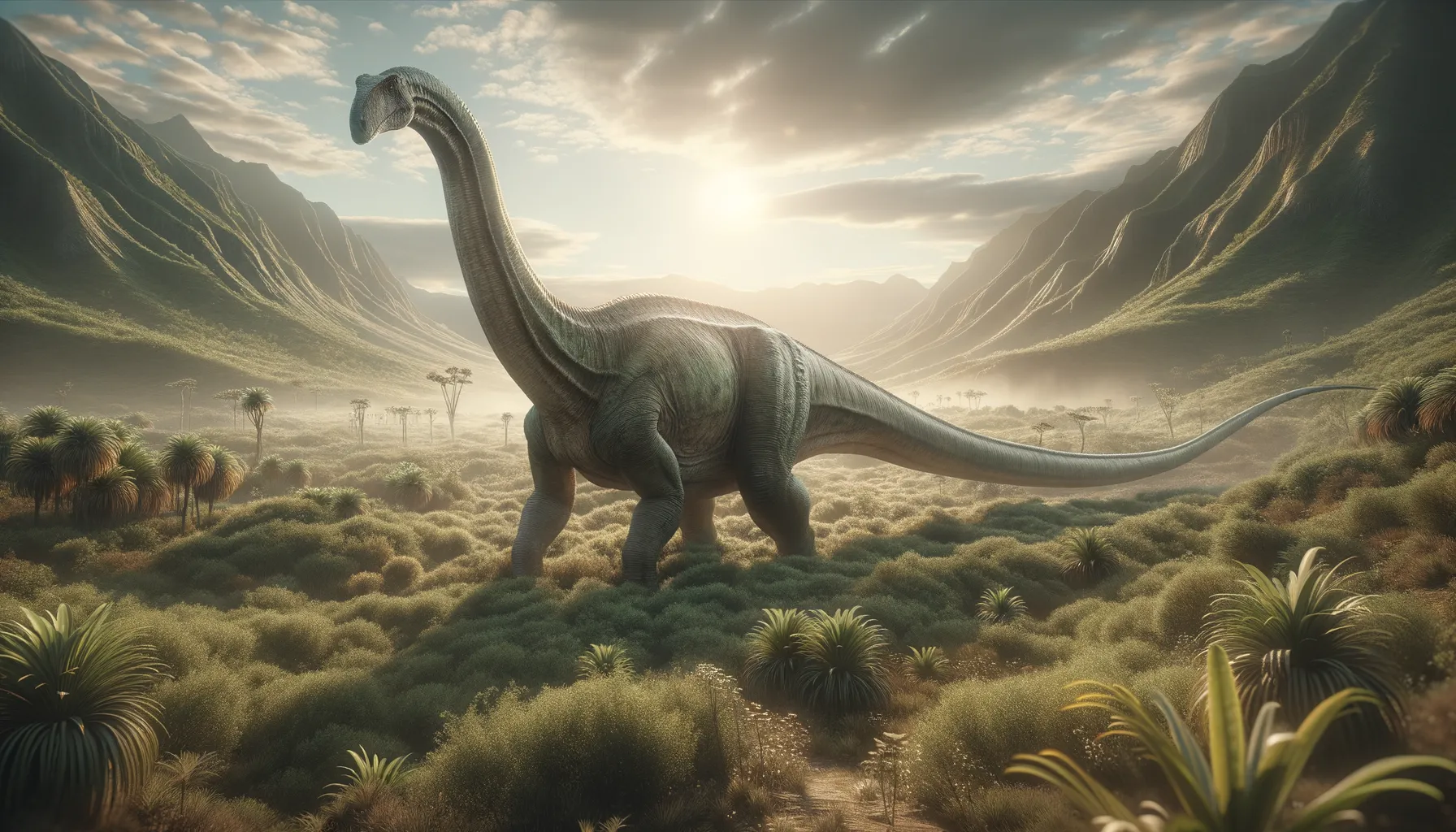
Duriatitan
Discover the ancient giant's secrets.
Period
triassic
Length
Approximately 25 meters long.
Height
Around 12 meters tall.
Weight
Estimated between 15 to 20 tonnes.
Duriatitan was a massive, plant-eating dinosaur that roamed the Earth during the late Jurassic period. As a sauropod, it featured a long neck and tail, and moved slowly but steadily to graze on vegetation. While not the most famous of dinosaurs, it contributes vital knowledge to understanding dinosaur distribution and ecology in its region during the Jurassic era. Fossil remains are scarce, providing paleontologists an ongoing puzzle.
Diet
Duriatitan was a herbivore, feeding primarily on plants. It likely consumed conifers, ferns, and horsetails, using its long neck to reach vegetation high up in trees and shrubs.
Hunting
Being a herbivore, Duriatitan did not hunt. Instead, it spent much of its time foraging for food in the lush Jurassic vegetation, using its height and reach to access a wide range of plant matter.
Environmental challenges
During the Jurassic period, Duriatitan faced environmental challenges such as changes in climate and availability of food sources. Seasonal shifts may have affected the growth of vegetation, necessitating migration to find adequate food. Moreover, competition with other large herbivores could have been a challenge for survival. Predators were a constant threat, forcing these dinosaurs to stay vigilant and possibly use their size as a deterrent.
Speed
Likely slow, typical of large sauropods.
Lifespan
Estimated similar to other large dinosaurs, around 70-80 years.
First discovery
Discovered in 1869 by scientist R. Owen in England.
Fun Facts
- Duriatitan was a large, plant-eating dinosaur similar to the well-known Brachiosaurus.
- The name 'Duriatitan' means 'Titan from Dorset', referring to where its fossils were found in England.
- This dinosaur lived during the Late Jurassic period, about 150 million years ago.
- Duriatitan is known primarily from a massive leg bone, indicating it was a giant among dinosaurs.
- Despite being discovered over a century ago, Duriatitan was only named and described as a unique species in 2010.
- Its fossils were found in a coastal cliff area, suggesting it might have lived near the sea.
- Duriatitan was part of the sauropod family, famous for their long necks and enormous sizes.
Growth and Development
Duriatitan, like other sauropods, experienced rapid growth in its early years. This fast development was necessary to reach a size that could offer some protection against predators. Once matured, the growth rate likely slowed, but these dinosaurs continued to grow throughout their lives. Bone structure suggests they had a high metabolic rate, supporting their large size and energy needs.
Habitat
Duriatitan lived in what is now Europe, inhabiting floodplains and open forests. These environments provided abundant plant life necessary for its diet. The climate during its time was likely warm and humid, which supported lush vegetation and a diverse ecosystem. The expansive areas allowed such large creatures to move and forage over large distances.
Interaction with other species
As a large sauropod, Duriatitan likely interacted with a variety of other dinosaurs, including predators and fellow herbivores. Its sheer size may have deterred smaller carnivores, although larger predators posed a real threat. Symbiotic relationships with other herbivores may have been common, where different species would graze in the same area without direct competition.
Natural lifespan
Duriatitan lived up to 70-80 years, similar to other large dinosaurs.
Reproduction
Duriatitan, like other sauropods, laid eggs in nests potentially shared communally. The eggs were likely large, and hatchlings would have been vulnerable to predators until they grew larger. Parental care, if any, was probably minimal, as young needed to quickly fend for themselves and join communal herds for protection.
Social behaviour
Duriatitan may have traveled in herds, offering protection against predators through collective size. Herding could also facilitate social learning and communication among individuals. While not aggressive, social dynamics may have included displays of size to establish dominance or attract mates.
Fossil locations
Fossils of Duriatitan have primarily been found in Dorset, England. These limited discoveries highlight the uncertainty of its exact distribution during the Jurassic period. The discovery of more fossils could enhance understanding of its geographical range and ecological interactions.
